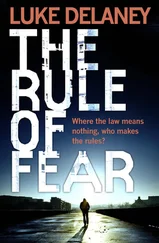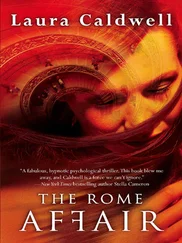Francesco listens with terror. He asks Savonarola why he won't embrace art and scholarship, why he is bent on destroying them. He tells Savonarola that they should be united against sin, that faith is the source of truth and beauty, that they can't be enemies. But Savonarola shakes his head. He says truth and beauty are only servants of faith. When they are anything else, pride and profit lead men into sin.
'And so,' he says to Francesco, 'I will not be dissuaded. There is more evil in those books and canvases than in all the rest that will be burned. For while playing cards and dice may distract the foolish, your wisdom is the temptation of the powerful and the mighty. The greatest families of this city vie to be your patrons. Your philosophers preach to the poets, whose works are widely read. You contaminate the painters with your ideas, and their paintings hang in the palaces of princes, while their frescoes crowd the walls and ceilings of every church. You reach dukes and kings, because they surround themselves with your followers, demanding guidance from the astrologers and engineers who are indebted to you, hiring your scholars to translate their books. No,' he says, 'I will not let pride and profit govern Florence any longer. The truth and beauty you love are false idols, vanities, and they will lead men into wickedness.'
Francesco is about to leave, knowing his cause will never be reconciled with Savonarola's, but in a last second of anger, he turns and tells Savonarola what he intends to do. 'If you will not accede to my demands,' Francesco says, 'then I will show all the world that you are a madman, not a prophet. I will carry each book and painting from your pyramid until the fire destroys me, so that my blood will be on your hands. And the world will turn against you.'
He prepares to leave again, when Savonarola says something Francesco never expects. 'My mind cannot be changed,' he says, 'but if you are willing to die for these convictions, then I offer you my respect, and I look on you as a son. Any cause that is true in God's eyes will be reborn, and any martyr who is true to a holy cause will rise from his own ashes and be transported to heaven. I do not wish to see a man of your convictions perish, but the men you represent, who own the objects you intend to save, are moved only by greed and vanity. They will never be reconciled to God's will, except by force. It is sometimes God's design to sacrifice the innocent to test the faithful, and perhaps it is just so now.'
Francesco is about to contradict him, to argue that knowledge and beauty shouldn't be sacrificed to save corrupt men's souls, when he thinks of his own men, Donato and Rodrigo, and sees the truth of what Savonarola says. He realizes that vanity and avarice are even among the ranks of the humanists, and he understands that there will be no resolution. Savonarola asks him to leave the monastery, because the monks must prepare for the ceremony, and Francesco obeys.
When he returns to his men with the news, they begin preparing for their final acts. The four men, Francesco and Terragni, Matteo and Cesare, go to the Piazza della Signoria. While Savonarola's assistants prepare the fire, Francesco, Matteo, and Cesare start removing texts and paintings from the pyramid, just as Francesco promised. Terragni stands by, watching and writing. The assistants ask Savonarola if they should stop their preparations, but he says they must continue. As Francesco and the brothers make trip after trip, carrying armfuls of books out of the mound and putting them in a pile at a safe distance, Savonarola tells them the bonfire will be lit. He announces that they will die if they continue. All three men ignore him.
The entire city, by now, has gathered in the square, waiting to see the fire. The crowd is chanting. The flames begin at the base of the pyramid, and grow. Francesco and the two brothers are still making trips. As the fire gets hotter, they wrap cloths around their mouths to keep from inhaling the smoke. They wear gloves to protect their hands, but the fire burns through them. By the third or fourth trip, their faces are dark with smoke. Their hands and feet are black from rummaging through the fire. The men sense that death is approaching, and at that moment, the architect writes, they realize the glory of martyrdom.
As their pile grows, Savonarola orders a monk with a wheelbarrow to return the objects to the flames. As soon as the men drop the books and paintings, the monk scoops them up and brings them back. After six or seven trips, everything Francesco has pulled from the fire is already burned. Matteo and Cesare have given up on paintings, because the canvases are destroyed. All three of them stamp at the covers of books with their hands to put out the flames, so the pages won't burn. One of them begins to call out in agony, crying to God.
By now there's no hope of saving anything. All of the artwork in the pyramid is ruined, most of the books are blackened through. The monk with the wheelbarrow is still pushing everything from their pile back into the fire. Every one of his trips undoes what all three of them do together. Slowly the crowd grows quiet. The whistles and catcalls die out. The people who yelled at Francesco, calling him a fool for trying to save the books, become silent. A few people shout for the men to stop. But the three of them continue their trips, back and forth, throwing their arms into the flames, climbing into the ashes, disappearing for seconds, then reappearing. By now the loudest sound in the square is the roar of the fire. The three men are gasping. They've inhaled too much smoke to scream. Every time they go back to their pile, the architect says, you can make out the red flesh of their hands and feet, where the fire has burned their skin off.
The first of them collapses into the cinders, facedown. It's Matteo, the youngest. Cesare stops to help, but Francesco drags him away. Matteo doesn't move. The fire crawls over him, and his body sinks into the pyramid. Cesare tries to call out to him, to tell him to stand up, but Matteo doesn't answer. Finally, Cesare stumbles over to the spot where his brother fell. When he's almost standing over Matteo's body, he collapses too. Francesco watches all this from the edge of the bonfire. When he hears Cesare's voice calling for Matteo, then listens to it fade under the fire, he realizes he's alone and falls to his knees. For a second he doesn't move.
Just as the crowd takes him for dead, he forces himself to his feet. Reaching one last time into the bonfire, he takes two fists of ashes and staggers toward Savonarola. One of Savonarola's assistants blocks his way, but Francesco stops short. He spreads his fingers and lets the ashes fall between them like sand. Then he says, 'Inde ferunt, totidem qui vivere debeat annos, corpore de patrio parvum phoenica renasci ' It's from Ovid. It means, 'A little phoenix is born anew from the father's body, fated to live the same number of years.' Then he falls at Savonarola's feet and dies.
Terragni's narrative ends with Colonna's burial. Francesco and the two brothers are given almost imperial funerals by their families and humanist friends. And we know that their martyrdom succeeds. Within weeks, public opinion shifts against Savonarola. Florence is tired of his extremism, his constant doom and gloom. Enemies spread rumors about him, trying to bring about his downfall. Pope Alexander excommunicates him. When Savonarola resists, Alexander declares him guilty of heresy and seditious teaching. He's sentenced to death. On May twenty-third, just three months after Francesco burns to death, Florence sets up a new pyre in the Piazza della Signoria. Right there, on the very spot of the two bonfires, they hang Savonarola and burn his body at the stake.
What happened to Terragni? I ask.
All we know is that he honored his promise to Francesco. The Hypnerotomachia was published by Aldus the following year, 1499.
Читать дальше












